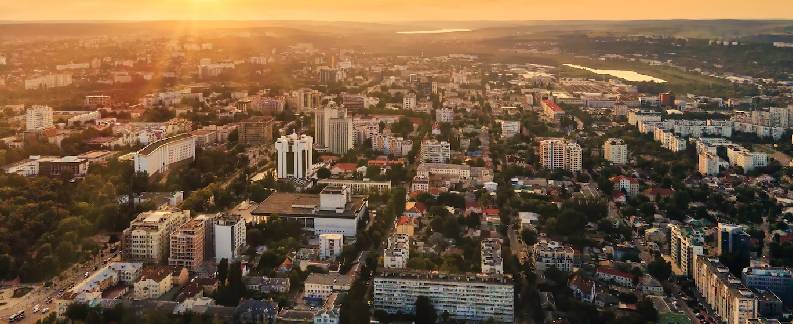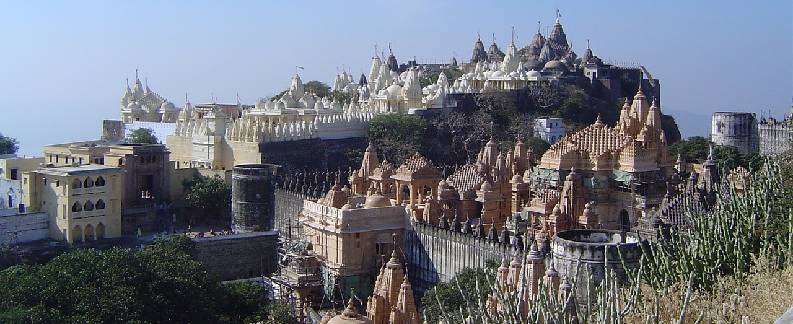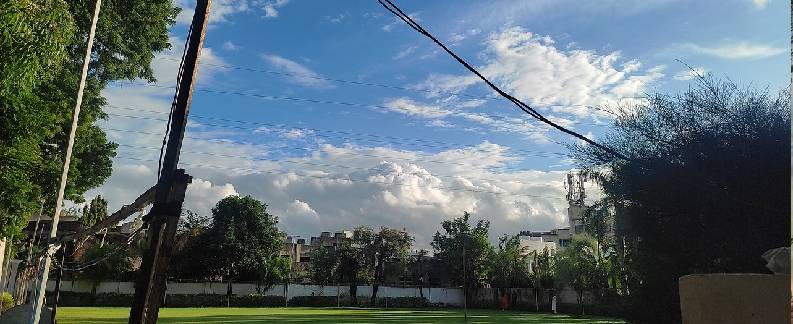Gujarat Trip
So far I am able to judge, nothing has been left undone, either by man or nature, to make India the most extraordinary country that the sun visits on his rounds. Nothing seems to have been forgotten, nothing overlooked - Mark Twain, from following the Equator
Namaste!! - We Welcome You With Folded Hands!!
Welcome to India, or as we say ‘Atithi Devo Bhava’ (The guest is an incarnation of God). Thank you for giving us the opportunity to serve you!!
Mid morning arrival, meeting and assistance upon arrival as our representatives welcome you and escort you to your car. Whilst the room keys and check-in is organized, our representative would introduce the tour to you and hand over the documents to you.
(Though the checkout time is 12 noon, every effort would be made to retain rooms till as late as possible without additional charges - subject to availability)
Afternoon is at leisure to recover from your long flight.
Overnight at House of MG, Ahmedabad (Modern Heritage Grand Room - Upgraded)

After breakfast, we will proceed on a guided tour of the City. Ahmedabad, the city of Ahmed Shah (the medieval ruler of Gujarat), is known for its rich past and its association with Mahatma Gandhi. Ahmedabad city of Gujarat offers the traveler a unique style of architecture, which is a blend of Hindu and Islamic styles (Indo-Saracenic style of architecture). Amongst the must visit places of Ahmedabad that our tour would include would be the monuments that date back to the 15th century. Our highlights on the tour would be as below:
Gandhi Ashram: A visit to Gandhi Ashram (or Sabarmati Ashram) presents a captivating glimpse into the life and work of Mahatma Gandhi. Learn about his non-violent, spiritual and revolutionary leadership, which supported India’s battle for independence from British rule. Peek inside humble houses and visit a superb museum, home to hundreds of Gandhi-related artifacts. Gandhi Ashram sits serenely on the banks of the Sabarmati River, hidden away from Ahmedabad’s bustling city life. It was Gandhi’s headquarters from 1915 to 1930.
Hutheesing Temple: Located in the city of Ahmedabad, Hutheesing Jain Temple was constructed in 1848 and is dedicated to Lord Dharmanath, the fifteenth Jain Tirthankar. The plan of building a grand temple was initiated by Shet Hathisinh Kesarisinh. Unfortunately, he died before the completion of the temple and hence, his wife had to come forward to complete the formation of Hutheesing Jain Temple.
Jumma Mosque: Jama Masjid (literally Friday Mosque), also known as Jami or Jumma Mosque, is the most splendid mosque of Ahmedabad, Jama Masjid built in 1424 during the reign of Ahmed Shah I. Lying in the old walled city, the mosque is situated outside Bhadra Fort area, along the south side of the road extending from Teen Darwaza to Manek Chowk.
Siddi Sayed Mosque: off the eastern end of Nehru Bridge stands the Sidi Saiyyed mosque. Built in 1573, it is the last of the major mosques to be built in Ahmedabad under the Mughal rule. The carved jaalis in the windows of the western wall are known worldwide and have become a symbol of the city of Ahmedabad.
Then we will also have a special visit during our tour, especially for the textile lover. Gujarat is known for its exquisite embroidery as well as for its kalamkari art form. One such appealing yet obscure art form practiced in the Ahmedabad, Gujarat is the “Mata ni pachedi”. Its historical evidence goes back almost 300 years. Mata ni pachedi which basically means “behind the idol of the Goddess” is a cloth enshrined with painting narratives of Goddess Durga in her various incarnations. Traditionally, red, maroon, black and white colours were used to paint the pachedis. Each colour has its own significance. Black wards off the evil, red is used to depict the Goddess, marron for mother earth and blood and white is associated with purity. In modern times, artists also incorporate indigo, green and yellow to make it look more attractive and to meet the consumer’s demands. Every picture painted on the cloth is a beautiful composed painting and the outlines, curves, and bright colours make it all more attractive. It has a marvelous grace, aggressiveness, and dialect which make it quite distinct from the other art forms. In recent times, this spectacular art form has seen some evolutions. To quicken the process the painters now use wooden blocks facilitating the use of finer motifs for printing. While craftsmen are refining this folk craft to be in pace with the changing world, yet the sanctity of this religious artifact remains untouched. They may have transformed the illustrations to more artistic and detailed specifications, but the practice of spreading the glory of the Mother Goddess and the depiction style of the mythical characters remains the same.
Overnight at House of MG, Ahmedabad (Modern Heritage Grand Room - Upgraded)
After breakfast, we will check in to hotel, Dasda.
Upon arrival in Dasda, we will check in to hotel, Rann Riders.
Upon arrival, check into The Rann Riders Resort. The resort is simply a magnificient tranquil oasis. Accommodations are in well appointed independent cottages spread throughout. The rooms are fairly spacious and are constructed with locally found materials to look like a traditional village. Built in the style of the Kooba houses of the Bajania community and the Bhunga houses of the Kutchi Rabaris, these thatch roof cottages are decorated with mirrors, mud plaster work and embroideries. Spread over 5 acres, you would love a wander through beautiful surroundings, apart from indulging in a very rewarding ornithological experience. A variety of birds are witnessed in the resort itself.
Afternoon, safari through the Bajana Village witnessing traditional lifestyles and occupations of the local tribes.
Overnight at Rann Riders (Rann Cottage) (B & D)
After breakfast, we proceed on a cross-desert safari across the Little Rann of Kutch, where the last of the Indian Wild Ass has been given protection in a dedicated sanctuary. The animal is not found elsewhere. The wild ass is a handsome chestnut brown member of the equus genus (horse family). Capable of reaching high speeds when galloping across the Rann, the wild ass is usually seen in small herds.
The Rann is a fascinating terrain – essentially the shallow bed of the sea that drains out in the dry months and gets flooded during the monsoon by the sea surging inland on the one hand and the seasonal streams in monsoon flood bringing in fresh water on the other. This mix of salt and sweet water provides ideal conditions for the prolific growth of crustaceans and other aquatic food for the flamingoes and other birds that breed and winter here in enormous numbers. Apart from the Wild Ass the Little Rann is also the home for a wide variety of species that include chinkara gazelle, nilgai, and the blackbuck antelope,
The main carnivores of the Little Rann of Kutch are the endangered Indian wolf, desert fox, Indian fox, jackals, desert and jungle cats, and a few hyenas.
Smaller mammals like hares, gerbilles and hedgehogs, and reptiles like spiny tailed lizard, monitor, red and common sand boa, saw-scaled viper, cobra, dhaman (Indian rat snake), etc, could also be seen during the safaris in the Rann.
The Little Rann of Kutch is a birdwatcher's paradise in winter. Houbara bustard, sandgrouse, desert chat, desert wheatear, nine species of larks, quails, gray francolin etc are seen in the saline desert wilderness. Eagles, vultures, harriers and falcons can be seen hunting in the Rann.
Overnight at Rann Riders (Rann Cottage) (B & D)
After breakfast, we will drive to Rajkot.
Upon arrival in Rajkot, we will check in to hotel, Khirasara Palace.
Afternoon is at leisure, Car and driver are available for local visits.
Overnight at Khirasara Palace, Rajkot (Ran Vilas Suite - Upgraded) (B)
Following breakfast, drive to Sasan Gir En route Junagadh.
Junagadh is one of those places in India, where you can get to see, historical monuments, temples, hills, and whatnot and Gujarat is home to it.
Following the visit, we will continue driving to Sasan Gir.
Overnight at Gir Lion Safari Camp, Sasan Gir (Luxury Cottage - Upgraded) (B, L & D)

Enjoy morning and afternoon private game drives, keeping an eye out for the Asiatic lion. Sasan Gir is the last remaining national park that contains Asiatic Lion. The population is well protected and flourishing so there's a good chance to spotting one.
Overnight at Gir Lion Safari Camp, Sasan Gir (Luxury Cottage - Upgraded) (B, L & D)
After breakfast, we will drive to Bhavnagar.
Upon arrival in Bhavnagar, we will check in to hotel, Nilambagh.
Bhavnagar was founded in 1723 by Bhavsinhji Takhtasinhji Gohil. It was the capital of Bhavnagar State, which was a princely state before it was merged into the Indian Union in 1948.
Overnight at Nilambagh Palace, Bhavnagar (Heritage Classic - Upgraded) (B)
After breakfast, we will drive to Palitana
Palitana is the world's only mountain that has more than 900 temples. The Palitana temples and whole mountain are considered the most sacred pilgrimage place (tirtha) by the Jain community, and is the world's largest Temple Complex.
Following the visit, we will drive back to Bhavnagar.
Upon arrival in Bhavnagar, we will check in to hotel, Nilambagh
Overnight at Nilambagh Palace, Bhavnagar (Heritage Classic - Upgraded) (B)

Morning, we will drive to Vadodara.
Upon arrival in Vadodara, we will check in to hotel, Madhavbagh.
Afternoon excursion to Champaner-Pavagadh Archaeological Park, a UNESCO World Heritage site and the only complete and unchanged pre-Mughal Islamic city in India. This concentration of largely unexcavated archaeological, historic and living cultural heritage properties is cradled in an impressive landscape. Marvel at the Jami Masjid (Great Mosque ) built in 1513 representing a perfect blend of Hindu and Muslim architecture which was a model for later mosque architecture in India.
Overnight at Madhavbagh, Vadodara (Turquoise Room - Upgraded) (B)

Morning, we will drive to Chhota Udepur.
Full day Excursion to Chhota Udepur. Chhota Udepur is in proximity to various hamlets of Bhils, Rathwas, Bhilalas and other tribes. The tribal folks can be spotted in sporting colorful attires and chunky jewelry. A tour of the tribal village and hamlets offer an insight of traditional architecture, lifestyle & handicrafts of each aboriginal community. The tribal market called ‘hatt’ occurs at different villages. Pithora painting, pottery, terracotta figures, Langoti wearing and bamboo basket weaving are main attractions.
Following the excursion, we will check in to hotel, Express Towers
Overnight at Madhavbagh, Vadodara (Turquoise Room - Upgraded) (B)
Transfer to the airport to board your onward flight back home.
END OF SERVICES
We do hope the flavor of India will remain on your taste buds for all times to come and hopefully would kindle an indelible fondness for the country and her people; Thank you for being our guest, and as we say in India
‘Please come back soon”
Thank you for giving us the opportunity to serve you!!

Copyright © 2016 - 2023, Trinetra Tours Pvt Ltd. Powered By DigiLantern

